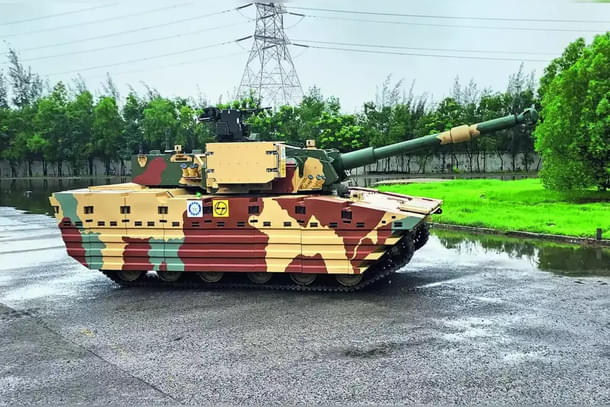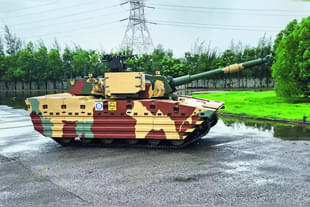Defence
DRDO's R&D On Arjun Tank Didn't Go To Waste. It Led To Zorawar Light Tank's Development In Record Time
Ujjwal Shrotryia
Jul 12, 2024, 06:25 PM | Updated 06:25 PM IST
Save & read from anywhere!
Bookmark stories for easy access on any device or the Swarajya app.


India's Zorawar light tank was unveiled on 6 July. It is developed by the Defence Research and Development Organisation (DRDO) and the private firm Larsen & Toubro (L&T).
The light tank is designed to operate primarily in the high-altitude areas of eastern Ladakh and northern Sikkim, opposite the China border.
The prototype was reportedly developed in a record time of 19 months. The DRDO and L&T have even conducted internal trials of the prototype.
This is perhaps the first time that the DRDO has unveiled a prototype of a complex product and even commenced its testing with such alacrity; that is, within less than two years of the Army drafting its requirements.
According to DRDO chief Dr Samir Kamat, the tank is expected to be inducted into the Army by 2027 — an ambitious timeline — after a series of summer and winter trials that are expected to last for a year and a half.
The light tank, projected to weigh around 25 tonnes (plus or minus 10 per cent), is supposed to have various new-generation technologies like active protection system (APS), see-through armour (STA), artificial intelligence (AI)-equipped loitering munitions and surveillance drones, and cannon-launched anti-tank guided missiles.
Moreover, the tank will be amphibious, air transportable, and able to cross steep mountains and water bodies more efficiently than the T-72 and T-90 main battle tanks now in operation.
Integrating such complex technologies to come up with a working prototype and putting it to test within a short span is nothing short of a miracle for the Indian military-industrial complex.
Several such ambitious projects have languished in either the development or trial phase for years, prompting imports by the armed forces.
Discussions on the co-production of Javelin anti-tank guided missiles (ATGM) due to delays in the procurement of man-portable, anti-tank guided missiles (MPATGM) is one such instance.
The MPATGM, which underwent its first trials in 2018, is still undergoing trials, with no clarity on when it will be inducted.
The delays in the induction of the Arjun tank in the Army and the Tejas fighter jet in the Air Force are more such examples.
However, Zorawar is hinting at a different glide path, at least for now.
Its lightning-fast development can be attributed to two factors.
One, the DRDO has banked on decades of research and development (R&D) on the Arjun tank to design Zorawar.
The lessons learnt by the DRDO in developing the Arjun tank and addressing the various issues and shortcomings pointed out by the Army have all gone into the design and development of the light tank.
The work on Zorawar is also a prime example of how funds infused in R&D never go to waste. Even though the Arjun tank, on whose development funds were spent, was not inducted in large numbers, its experience has led to Zorawar.
Two, the DRDO has taken the new, more pragmatic approach of using off-the-shelf components in prototype development until their indigenous alternatives are developed.
Capitalising on L&T's manufacturing capabilities and using off-the-shelf components from foreign manufacturers like Belgian Cockreil’s remote turret with its 105-millimetre (mm) gun, American Cummins-made 1000 horsepower (HP) engine, German-made 'Renk' transmission, and French thermal optics have also helped in faster development. (L&T manufactured the K-9 Vajra-T self-propelled howitzers under licence from South Korea.)
This is approach is similar to what the Koreans did in developing their KF-21 Boramae fighter jet, as did the Turkish in developing their Bayraktar TB-2 drone.
The idea is to use components that are certified and already in use in similar products to build the prototype and send it for trials.
As and when indigenous alternatives are developed, they are incorporated into the product, gradually increasing its indigenous content.
The Bayraktar TB-2 used Austrian Rotax engines and German and Canadian optical sensors. The Korean KF-21 used American jet engines, British ejection seats, and European-made missiles and sensors.
Now that Zorawar is in the testing phase, the Army must work with the DRDO and L&T to address any hiccups and shortcomings that might arise. That would help expedite the trials and induct the light tank into service.
Staff Writer at Swarajya. Writes on Indian Military and Defence.





